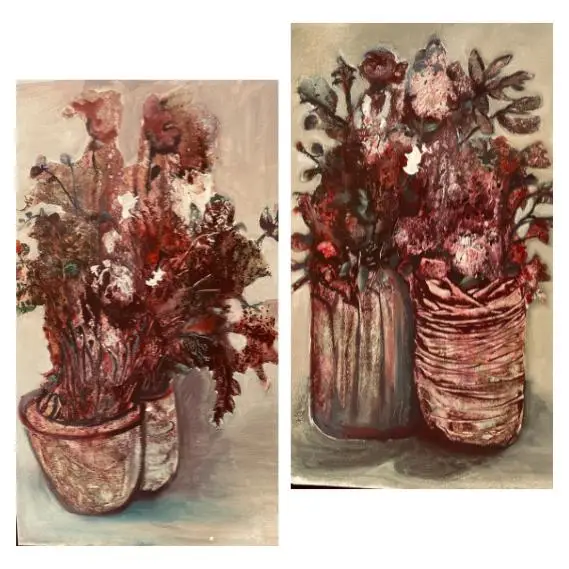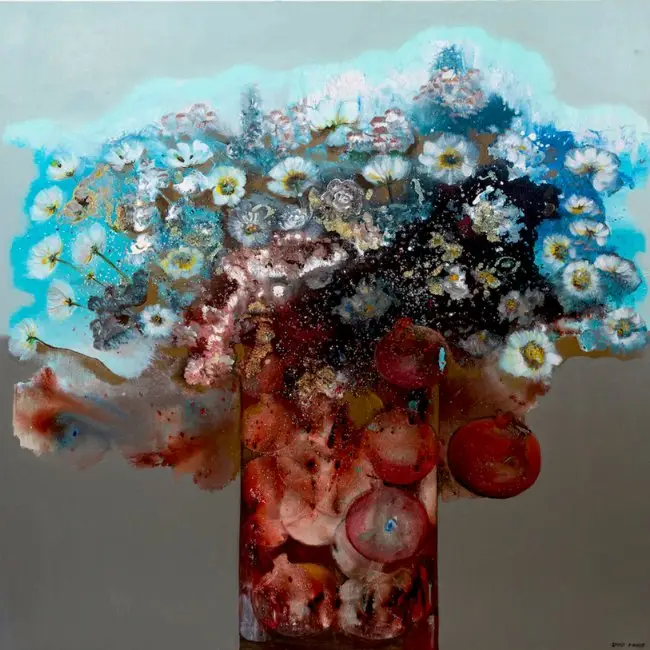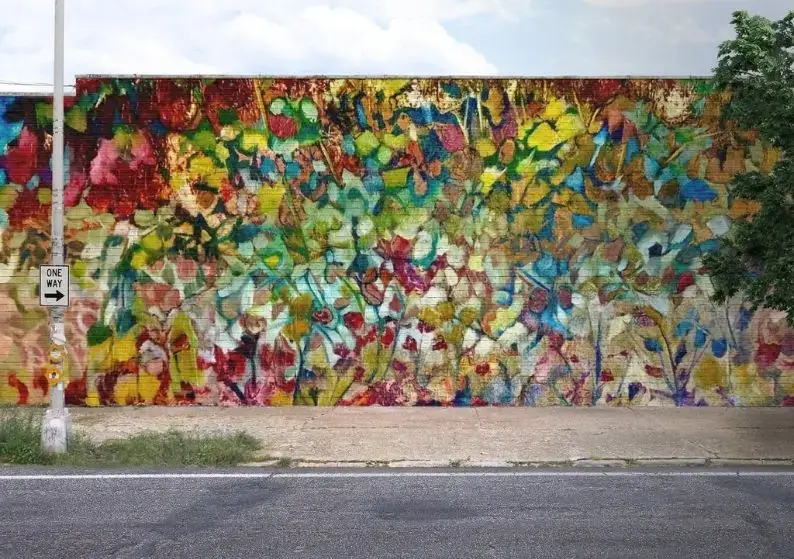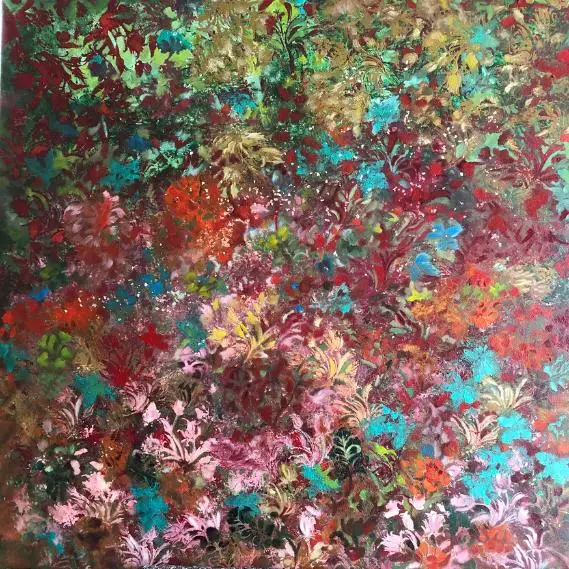
In the world of abstract art, colours go beyond their physical presence and become powerful expressions of emotion. The combination of warm and cool tones creates a harmonious blend of feelings, with each colour having a unique impact on the human mind. Warm colours like reds, oranges, and yellows often bring about feelings of heat, excitement, and vitality. On the other hand, cool colours such as blues and greens can evoke tranquility, reflection, or even sadness.
One artist who exemplifies this emotional connection through colour is Mark Rothko. His large canvases filled with vibrant hues envelop viewers in a world of emotions. Rothko’s skillful manipulation of colour elicits a response that words cannot fully capture, inviting spectators into an unspoken conversation with their deepest emotions.
In addition to colour, the shapes and forms found in abstract artworks contribute another dimension to this emotional narrative. Flowing curves may convey movement and gracefulness, while jagged edges can express tension or conflict. These components work together to establish a visual dialect that speaks directly to our hearts.
As a result, abstract art serves as a reflection of the intricate nature of human emotions—a vivid exploration of our inner selves through the dynamic interaction between colours and shapes. This ability for expression makes abstract art significant not only within artistic communities but also in contemporary spaces where it influences moods and atmospheres.
In the world of abstract art, there is a freeing departure from the need to accurately represent things. This daring move away from tradition allows artists to go beyond just showing things as they are, and instead invite viewers into a realm where imagination takes charge. Abstract art embraces breaking conventions, offering new ways of looking at things that challenge and inspire.
The importance of this shift in art lies in its ability to encourage personal involvement and connection. Each viewer becomes an active participant, interpreting shapes, colours, and forms through their unique perspective. Non-representational forms become vessels for meaning-making, where the absence of explicit narratives invites introspection and dialogue.
Think about the works of artists like Wassily Kandinsky or Jackson Pollock, whose canvases pulse with energy and emotion free from the constraints of realism. In this space, personal interpretation is not just encouraged; it is essential. Abstract art becomes a mirror reflecting the viewer’s thoughts, emotions, and experiences.
This freedom cultivates a profound sense of ownership and intimacy between the artwork and its audience. As traditional boundaries fade away, abstract art becomes a dynamic bridge connecting different realities through shared human expression. Here lies an infinite potential for discovery and understanding within each brushstroke’s abstract allure.
In the ever-changing world of modern interior design, abstract art stands out as a symbol of creativity and new ideas. Its remarkable ability to bring bright colours into homes turns ordinary walls into expressions of deep feelings and visual beauty. The fluidity and energy found in abstract artworks challenge traditional limits, encouraging an exploration of shape, colour, and texture.
Abstract art does more than just decorate; it redefines spaces, conveying emotions across walls with each stroke of the brush. This quality makes it a vital component in modern interior design, capturing the spirit of contemporary living.
Shadi Mahsa, an intriguing Iranian artist, creates nature-inspired art that captivates the senses and stirs the soul. Born in Tehran, her artwork combines traditional Persian art and philosophy with contemporary expressions. This blend is evident in her vibrant canvases, showcasing her cultural heritage and modern influences.
Her artistic vision is deeply influenced by chaos theory and the natural patterns it reveals. These concepts come to life in her work through intricate designs, repetition, and self-similarity, infusing her pieces with energy. Mahsa’s paintings offer more than just visual enjoyment; they take viewers on an immersive exploration of nature’s intricacies.
Mahsa’s work goes beyond conventional limits, presenting a new viewpoint on abstract art’s role in contemporary spaces. Each artwork serves as more than just decoration; it becomes a means for emotional discovery and connection, transforming environments into peaceful retreats for contemplation.
Abstract art, with its limitless creativity, has had a deep influence on various forms of art, leaving a mark that is both unforgettable and transformative.
Music finds a connection in abstraction through composers who aim to convey the visual experience of abstract paintings into soundscapes. The emotional depth and fluidity present in abstract compositions inspire musicians to create pieces that resonate with the same intensity and unpredictability.
In literature, abstract art encourages writers to explore non-linear narratives and complex character emotions, reflecting the dynamic interplay of shapes and colours found in such artworks.
This influence extends to dance, where choreographers draw upon the free-form expressions of abstract art to craft performances that defy traditional constraints, embracing spontaneity and movement as art forms.
Graphic design and advertising make use of abstract art’s ability to suggest rather than explicitly represent, creating messages that engage viewers on an instinctual level. Through deliberate use of colour and form, these fields wield abstraction as a potent means of communication.
Engaging with abstract art also offers significant advantages for mental health. Immersion in its vibrant worlds can promote mindfulness, alleviate stress, and encourage emotional release. By inviting self-reflection and fostering personal interpretation, abstract art acts as a refuge for well-being amidst life’s turmoil.
Abstract art has become a popular choice in modern interior design, adding a touch of creativity and personal expression to living spaces. Unlike traditional art forms that depict specific subjects, abstract art uses colours, shapes, and forms to convey emotions and ideas.
Here are a few reasons why abstract art can be an excellent addition to your home:
One of the most effective ways to incorporate abstract art into your home is through unique wall art pieces. These artworks have the power to transform bare walls into captivating focal points, making any room feel more inviting and interesting.
When selecting abstract wall art for your space, consider the following:
If you’re looking for unique wall art that combines nature-inspired themes with abstract elements, consider exploring Shadi Mahsa’s collection. Her artworks go beyond mere decoration—they offer an immersive experience that speaks to the soul and breathes life into any home.
With Shadi Mahsa’s nature-inspired abstractions adorning your walls, you can create an environment that nurtures creativity, introspection, and emotional well-being.
Abstract art utilizes color theory to evoke a wide range of emotions. Warm tones like reds and yellows can create feelings of warmth and energy, while cool tones such as blues and greens often evoke calmness and tranquility. This emotional response is crucial in shaping the viewer’s experience and perception of the artwork.
The departure from representational accuracy in abstract art allows for personal interpretation, fostering engagement and connection between the viewer and the artwork. Each individual can derive their meaning from non-representational forms, making the experience unique and deeply personal.
Abstract art plays a vital role in contemporary interior design by creating dynamic environments. Its vibrant colors and patterns can enhance balance and harmony within a space, transforming ordinary rooms into engaging areas that reflect personality and creativity.
Shadi Mahsa is an Iranian artist known for her nature-inspired abstractions that draw from Persian art and philosophy. Her works explore Chaos Theory and natural patterns, offering a unique perspective that resonates emotionally with viewers, enriching modern interiors with vibrant aesthetics.
Abstract art has transcended traditional boundaries, influencing various disciplines such as music, literature, dance, graphic design, and advertising. Its innovative approach serves as a powerful communication tool that enhances well-being by engaging audiences on multiple levels.
The aesthetic value of abstract art lies in its ability to foster creativity and introspection. It adds beauty and emotional richness to contemporary living spaces, making them more inviting. Exploring artists like Shadi Mahsa can provide unique offerings that enrich your home with vibrant, nature-inspired abstractions.





